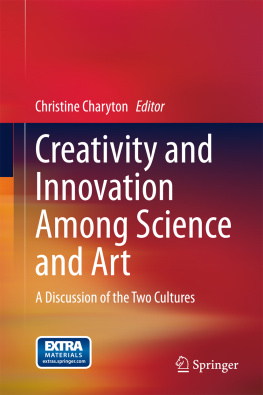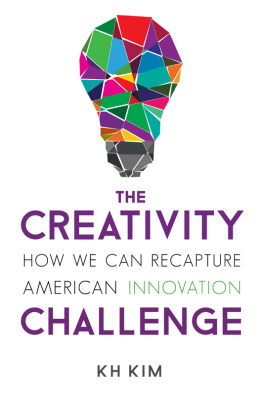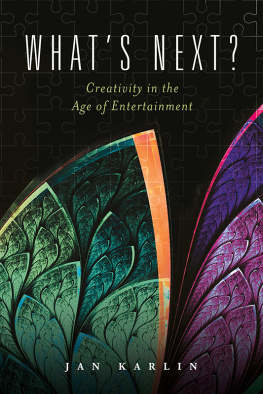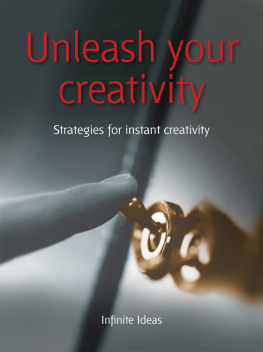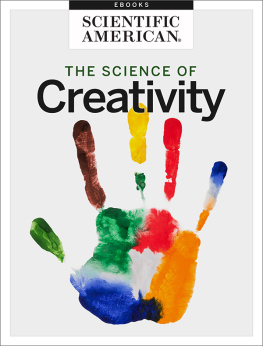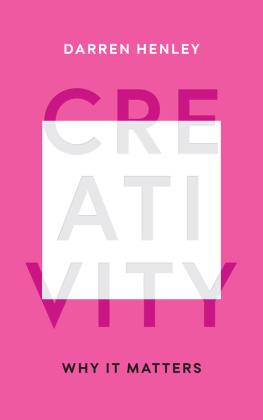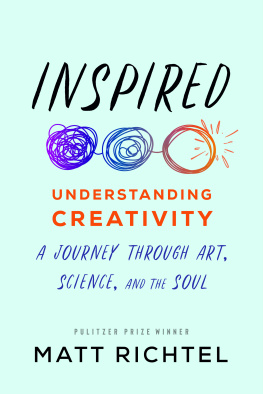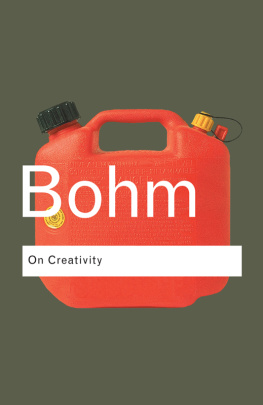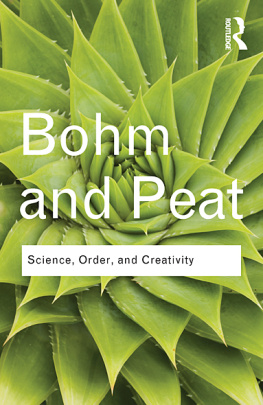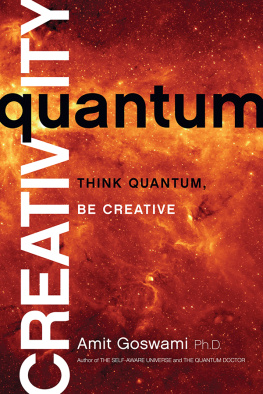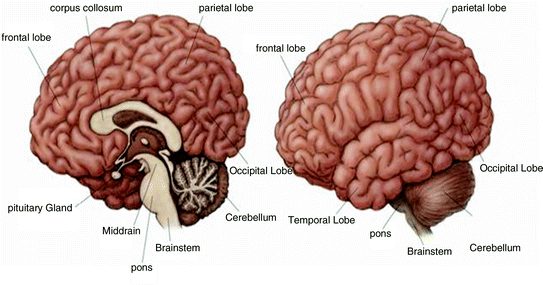Springer-Verlag London 2015
Christine Charyton (ed.) Creativity and Innovation Among Science and Art 10.1007/978-1-4471-6624-5_1
1. Introduction
Christine Charyton 1
(1)
Department of Neurology, Ohio State University, Wexner Medical Center, Columbus, OH 43212, USA
I do not teach anyone I only provide the environment in which they can learn .
Albert Einstein
The only person who is educated is the one who has learned how to learn and change .
Carl Rogers: former Ohio State University faculty
In todays economy, creativity and competitiveness are the economic drivers of innovation around the world (Florida ) emphasized technology, talent, and tolerance, as the 3 Big Ts, that lead toward creativity and innovation. Talent (human capital) is vital for most career positions that value and utilize creativity. We need, not only to, tolerate differences, but rather embrace diversity. Students need to think creatively to enhance the 3 Big Ts in order to find employment, sustain their career development, as well as develop their own personal and economic success.
Creativity is a vital need that still tends to be overlooked, especially in science, yet alone the integration of science and art. This book encompasses creativity in multiple domains in science and art from across the university and university medical center. Creativity is discussed in the creative arts therapies (music therapy and art therapy), neurology, neuroscience and medicine (creativity, music, and the brain), Science, Technology, Engineering and Mathematics (STEM) (chemistry education, engineering education, theoretical physics, and physics education), music (improvisation and culture), and art (the integration of science, art, and culture). The application of creativity by innovation is discussed in engineering, creative arts therapies (music and art therapy) as well as neurology and other areas.
Creativity is the vehicle in which innovation can come to fruition. We need to use our creativity to effectively prioritize needs for novel solutions. We sincerely hope that you enjoy your readings and recognize how creativity can be used for a greater good to solve everyday problems in various disciplines, your own discipline, and in everyday life.
The United States leads with innovation in the global economy. We all have an obligation to help improve the lives of the many, not only in the United States, but throughout the world.
Reference
Florida, R. (2005). The flight of the creative class: The new global competition for talent . New York: Harper Collins.
Springer-Verlag London 2015
Christine Charyton (ed.) Creativity and Innovation Among Science and Art 10.1007/978-1-4471-6624-5_2
2. The Neurology of Creativity: Focus on Music
Herbert B. Newton 1, 2
(1)
Departments of Neurology and Neurosurgery, Dardinger Neuro-Oncology Center, M410-B Starling-Loving Hall 320 West 10th Avenue, Columbus, OH 43210, USA
(2)
Division of Neuro-Oncology, The Ohio State University Wexner Medical Center and James Cancer Hospital and Solove Research Institute, Columbus, OH, USA
Abstract
Creativity has been a very difficult human quality to study, but is now beginning to be understood at the neurobiological level. The most recent theories suggest that the major lobes of the brain, in particular interactions between the frontal lobes and temporal lobes, are critical for maximizing the potential for creative endeavors. The neural circuitry of the limbic system, as well as catecholaminergic neurotransmitter pathways and their lobar interactions, is also important in the process. Music is one of the most creative and complex of all human activities and appears to involve numerous regions and pathways within the brain. The process of listening to music involves many specialized regions, including the auditory pathways, Heschls gyrus, the planum temporale (PT), and auditory association areas. Musical performance involves coordination between the neuromuscular system while playing an instrument, with simultaneous and constant auditory feedback on the quality of the performance and the need for any necessary adjustments. The process of music perception while listening or performing requires acoustical analysis of pitch, melody, and harmony, the use of auditory memories, analysis of musical syntax and emotional responses, and many other functions, all performed over a matter of milliseconds in the dedicated musical neural networks in the brain. In addition, the brains of musicians and non-musicians are now known to be different, with musicians having specialized networks and connections as a result of formal musical training. The origins of music, as well as the anatomical and neurobiological underpinnings of musical perception, performance, and training, are reviewed in detail.
Keywords
Creativity Neurology Frontal lobe Temporal lobe Neurotransmitters Music Neural networks Functional MRI Planum temporale Music processing Heschls gyrus
2.1 Creativity : Definitions and Overview
For hundreds of years, the underpinnings of human creativity have been debated by philosophers, psychologists, neurologists, psychiatrists, and cognitive neuroscientists. To this day, a complete understanding of this complex and mysterious process remains elusive (Hennessey and Amabile ). This definition is very helpful in understanding the creative process in the scientific disciplines (e.g., physics, chemistry, medicine), where the creative mind is trying to explain new anomalous findings that do not fit in with the current paradigm, but has limited value when applied to more artistic pursuits such as painting or writing music.
Earlier neuroscientific concepts of creativity from the 1970s were dominated by the theory of hemispheric specialization, in which the non-dominant hemisphere (typically the right hemisphere) was considered to be specialized for creative activity in all disciplines, as well as holistic pattern recognition (Hennessey and Amabile ).
More modern theories on the neurobiology of creativity focus on lobar functions and lobar connectivity, in particular the interactions between the frontal lobes and portions of the temporal and parietal lobes (see Fig. ). Recent research has also implicated the limbic system, with its innate drive for human interaction and communication, as playing a role in creativity. Integral to connectivity between the different lobar areas, as well as for limbic system input into the frontal lobes, are the various catecholamine neurotransmitters expressed in neurons of these different neural networks. In particular, it is now becoming apparent that the degree of dopaminergic and noradrenergic activity, mainly from limbic and locus coeruleus projections into the major lobes, is also important for the creative process. In the following sections, we will review in more detail the various components of the lobar theory of creativity.
Fig. 2.1
Diagrams showing the medial and lateral surfaces of the brain, including the major lobes: frontal, parietal, temporal, and occipital, along with the cerebellum and brainstem
2.1.1 The Temporal Lobes and Creativity
Early on in the development of the lobar theory of creativity , it was postulated that the temporal lobe might be the neuroanatomical location for creative drive. This was based on the fact that hypergraphia , a compulsive drive to write, was localized to the temporal lobe in some patients with temporal lobe epilepsy, typically on the right side (Yamadori et al. ). Frontal lobe lesions can occasionally induce mania and pseudomania, but typically show dysfunction of the temporal lobes as well on PET imaging. Although the correlation between manic states and creativity is most powerful for language-based fields, temporal lobe dysfunction can also result in the equivalent to hypergraphia in other creative endeavors.

